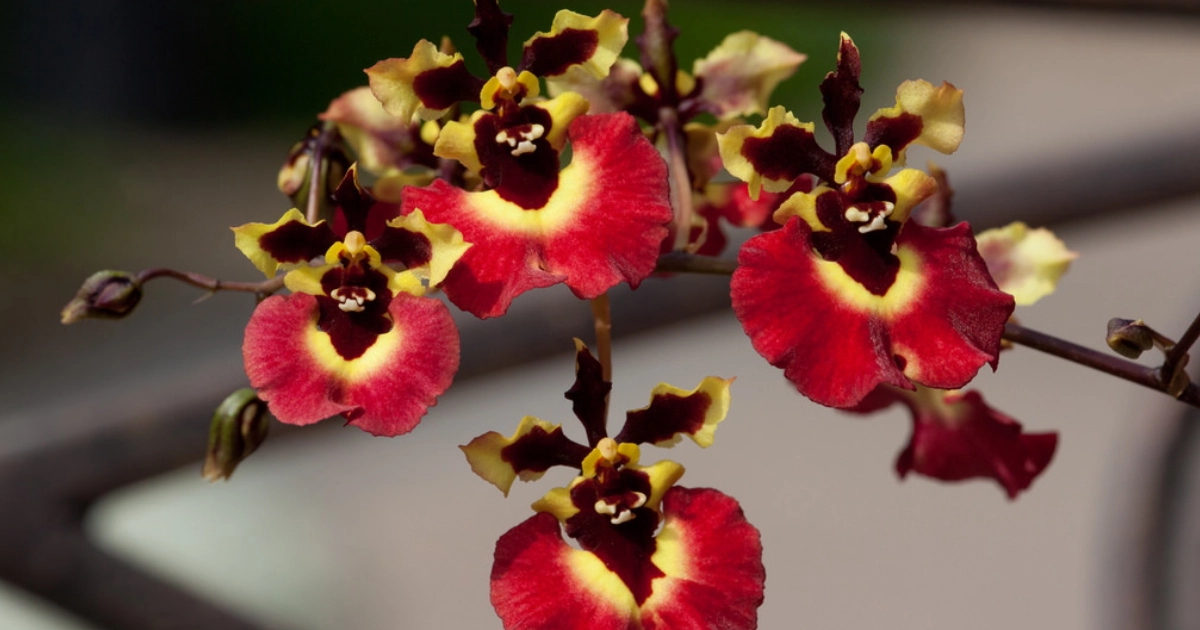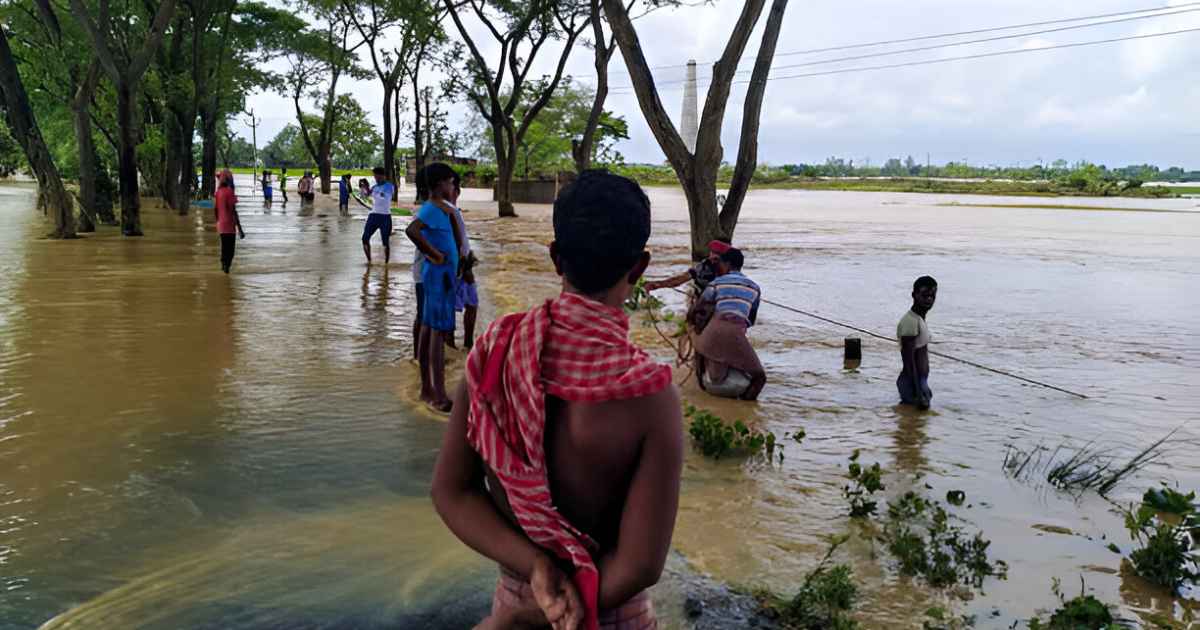Agri Biz
Care for Tolumnia Orchids

Miniature orchids of the Tolumnia species, commonly referred to as Equitant Oncidiums, are native to the Caribbean and Central America. These little plants are highly appreciated by orchid fans for their stunning, colorful, and long-lasting flowers in a variety of hues, including yellow, orange, red, and purple. Here are some crucial maintenance instructions to make sure your Tolumnia orchids thrive:
Light
Because these orchids prefer bright, filtered light, it’s ideal to put them close to an east or west window that receives several hours of direct sunlight each day. However, it’s essential to keep them out of direct sunlight because it can burn the leaves.
Water
Tolumnia orchids prefer a continuous damp environment that is not soggy. It’s advised to water them once or twice a week, depending on the humidity conditions in your home. The potting mix must be allowed to gradually dry out between waterings; however, avoid letting it dry out completely.
Humidity
High humidity is ideal for tolumnia orchids, with a suggested range of 60 to 70%. If the air in your home is dry, you might want to use a humidifier or put a tray of water close to the plant to increase the humidity.
Growing Medium
These orchids require a potting soil that drains well and holds moisture without becoming soggy. For these orchids, a combination of bark, sphagnum moss, and perlite works well.
Fertilizer
Your Tolumnia orchids require frequent fertilization with a balanced, water-soluble fertilizer that has been diluted to half strength. Feed them every two weeks when they are growing and once a month when they are dormant.
Repotting
Every two to three years, or as soon as the potting soil has deteriorated and become compacted, repot your Tolumnia orchids. Select a pot that is marginally larger than the one you previously used, and use a potting mix that drains well.
Air Circulation
Tolumnia orchids need sufficient air circulation to keep healthy and stop the growth of fungus. Place them in a room with good ventilation in your house.
Pruning
To promote new growth and additional blooms, trim the flower spikes back to the plant’s base after the plant has completed blooming.
Propagation
orchids can be multiplied by means of keikis, or baby plants, which develop at the parent plant’s base. The keikis can be gently removed and potted up in their own containers after they have grown roots.
Pests and Diseases
Tolumnia orchids are typically resistant to pests and diseases, however if kept in very moist or humid environments, they may become prone to fungus infections. Making ensuring the potting mix is well-drained and avoiding overwatering will help to lower the danger of fungal diseases.
In conclusion, Tolumnia orchids require minimal maintenance and can provide a magnificent display of blossoms for many years. You’ll be able to enjoy an abundance of lovely blossoms by giving them bright, filtered light, a well-draining potting mix, high humidity, regular fertilizer, and good air circulation. To determine which growing circumstances are best for your plants, don’t be afraid to experiment. If you need assistance, you can also ask other orchid aficionados or gardening professionals for advice. Your Tolumn will last as long as you take good care of it.

Agri Biz
Remal Ravages Crops in Khulna Agricultural Zone, Losses Estimated at Tk 180.24cr

Cyclone Remal has inflicted severe damage on crops across 45,590 hectares of land in the Khulna agricultural zone, causing losses worth Tk 180.24 crore, as reported by the Directorate of Agricultural Extension (DAE) in Khulna.
According to Mohon Kumar Ghosh, Additional Director of the DAE Khulna Zone, 44,148.95 hectares of farmland suffered partial damage, while 1,450.90 hectares were completely destroyed in the four affected districts: Khulna, Bagerhat, Satkhira, and Narail.
In Khulna district, Cyclone Remal affected 3,565.65 hectares of cropland belonging to 13,796 farmers, resulting in losses estimated at Tk 42.98 crore. Bagerhat district witnessed damage to 12,611.50 hectares of cropland from 39,465 farmers, with losses amounting to Tk 97.36 crore. In Satkhira, 659.7 hectares of cropland owned by 12,156 farmers were affected, incurring losses of Tk 24.42 crore. Narail saw damage to 28,763 hectares of cropland from 8,620 farmers, with estimated losses of Tk 15.47 crore.
Speaking to BSS, Mohon Kumar Ghosh highlighted the extensive damage caused by Cyclone Remal to the southern coastal areas, particularly croplands. The affected crops include jute, Aush seedbed, aush cultivated land, groundnut, chili, bona Aman, ginger, turmeric, summer melon, litchi, mango, papaya, betel nut, sugarcane, banana, winter maize, sesame, and various Kharif season vegetables such as tomato, mung bean, and banana.
Following directives from Prime Minister Sheikh Hasina, efforts are being made to support the affected farmers. “We are working tirelessly to help the helpless farmers recover their losses,” Ghosh said, adding that the government is providing incentives and regular counseling and supervision at the field level to aid recovery.
In the coming months, the affected farmers will continue to receive various forms of government support to mitigate the impact of Cyclone Remal.
Agri Biz
Govt Plans 10% Annual Growth in Agriculture by 2025-26

The Bangladesh government has allocated Tk 385 billion for agricultural development over the next three years, aiming for an average annual growth of 10% in the sector by the 2025-26 fiscal year. This investment underscores agriculture’s crucial role in ensuring food security and driving equitable economic growth, according to the ‘Medium Term Macroeconomic Policy Statement (2023-24 to 2025-26)’.
Despite its declining share in GDP, agriculture remains vital for the livelihoods of the majority, especially in rural areas. To enhance food production and resilience against challenges, the government’s strategy includes developing high-yield and adversity-tolerant crop varieties, expanding mechanization and irrigation, and improving access to affordable inputs such as seeds and fertilizers.
The policy document highlights various initiatives aimed at modernizing agriculture through technology. These include prioritizing surface water over groundwater for irrigation to conserve resources, integrating renewable energy solutions, and utilizing remote sensing for crop monitoring.
The government continues to support the sector through subsidies, financial incentives, and technological innovations to establish a sustainable and self-reliant agricultural framework.
The fisheries and livestock sub-sectors also make significant contributions, accounting for 2.53% and 1.91% of GDP, respectively, while providing essential protein sources and livelihoods for over 12% of the population. Achievements in these areas include achieving self-sufficiency in fish, meat, and egg production, with milk production expected to follow suit. Moreover, these sectors play a crucial role in foreign exchange earnings through exports.
Looking ahead, the Ministry of Livestock and Fisheries plans to launch development projects to enhance production capacities, adopt advanced management technologies, and improve conservation efforts, particularly for young hilsa fish (‘jatka’).
Water resource management is another focal point, given its importance for sustainable agriculture. Initiatives are underway to improve surface water availability by excavating water bodies and enhancing coastal afforestation to secure equitable water shares from transboundary rivers.
With climate change posing significant economic risks, projected to reduce GDP by 6.8% by 2030, the government has prioritized comprehensive strategies to mitigate these impacts. The Mujib Climate Prosperity Plan aims to equip vulnerable sectors and communities with tools to enhance resilience and stability against climate-related disruptions.
Through these multifaceted efforts, Bangladesh is taking decisive steps to safeguard and advance its agricultural heritage amidst evolving global challenges.
Agri Biz
IFC Invests $30mn in PRAN to Bolster Bangladesh’s Food Industry

The International Finance Corporation (IFC) is investing US$30 million in Pran Dairy Limited (PDL) and Habiganj Agro Limited (HAL), both part of the PRAN Group, a leading player in the food and beverage industry (F&B) in Bangladesh. This investment aims to support severely impacted businesses, particularly those reliant on imports for raw materials. The goal is to enhance the resilience of the food processing market, create jobs, foster gender diversity, and strengthen the economy.
This marks the first time IFC’s USD term loans will be utilized for working capital purposes in Bangladesh. These funds will enable PDL and HAL to sustain their operations, increase exports, and preserve over 30,000 jobs, as stated in a press release today. Additionally, IFC will assist PRAN Group in enhancing women’s participation and inclusion in the workplace through relevant policies and practices. The F&B sector plays a crucial role in Bangladesh’s economy, accounting for about 13 percent of manufacturing production value and employing 19 percent of the industrial manufacturing workforce, with a projected compound annual growth rate of 12 percent.
However, challenges such as foreign exchange shortages, high energy prices, and power shortages have disrupted the import of raw materials and constrained local commercial banks’ lending capacity. In response, IFC’s longer-term US dollar financing aims to improve access to foreign exchange, helping Bangladeshi companies navigate the crisis.
Uzma Chowdhury, director (Finance) of PRAN-RFL Group, emphasized the importance of regular access to US dollars for a net importer like PRAN Group. Given the current shortage, accessing USD funds for working capital has been challenging. IFC’s provision of scarcely available US dollar working capital will ensure the long-term stability of the company’s operations and contribute to the country’s economic stability.
As part of its advisory services, IFC will also support PRAN Group in developing the company’s smallholder sourcing supply chain in Bangladesh and identifying opportunities to decarbonize its agro-processing operations, among other initiatives.
Martin Holtmann, IFC country manager for Bangladesh, Bhutan, and Nepal, reiterated IFC’s commitment to supporting clients during crises. He stated that IFC’s financing aims to alleviate the lack of access to foreign exchange while promoting private sector growth in Bangladesh. This investment is expected to enhance food security, prioritize support for strategically important industries, diversify Bangladesh’s export base, create jobs, expand market opportunities, and enhance economic resilience.
Since 2010, IFC has invested over US$3.8 billion to help the private sector grow in Bangladesh.

